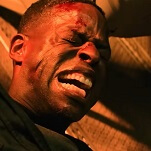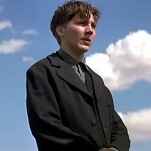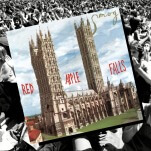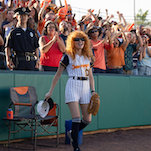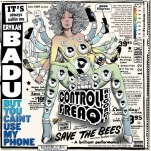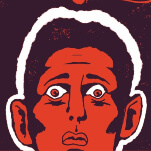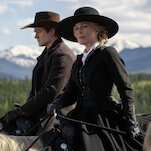Pop culture can be as forbidding as it is inviting, particularly in areas that invite geeky obsession: The more devotion a genre or series or subculture inspires, the easier it is for the uninitiated to feel like they’re on the outside looking in. But geeks aren’t born; they’re made. And sometimes it only takes the right starting point to bring newbies into various intimidatingly vast obsessions. Gateways To Geekery is our regular attempt to help those who want to be enthralled, but aren’t sure where to start. Want advice? Suggest future Gateways To Geekery topics by emailing [email protected].
Series creator Rod Serling had a genius for turning his political views into absorbing but tiny tales of science fiction. But he also wasn’t exactly subtle, so the series often requires more than a slight working knowledge of 1950s and ’60s American history and politics. Nor does it help that many of the most famous episodes have been so thoroughly subsumed by the culture at large that it’s just about impossible to come to them fresh, without knowing the big twist endings or the thrust of the plot. If you’ve ever seen a Simpsons “Treehouse Of Horror” episode, you likely have seen a pretty good summation of one of these episodes.
Finally, many episodes are clearly just buildups to a final twist. Coming across the wrong Twilight Zone as a way to start your journey into the series is a sure way to kill excitement for the show. Once you’re into the series’ headspace, there’s nothing like it. But getting there can take some work.
Possible gateway: ”The Invaders,” season two, episode 15
Why: Boasting a great turn from actress Agnes Moorehead and a script by Richard Matheson, “The Invaders” is an almost completely silent half-hour of surprisingly scary science fiction, as Moorehead (playing a role known only as “The Woman”) does battle with an army of tiny but resourceful alien invaders in her out-of-the-way cabin, devoid of modern comforts. The “action sequences,” such as they are, are surprisingly well done, the special effects hold up remarkably well, and the central political message—only conveyed at the end through a twist that maintains its eeriness—remains thought-provoking to this day. It’s also one of the better-directed episodes of Zone, relying on cool camera moves and moody lighting to convey what ham-fisted dialogue might express in other TV science-fiction shows.
Next steps: From here, it’s time to dive into one of the most famous episodes of The Twilight Zone. The one to avoid is probably “Eye Of The Beholder,” which is fine and all, but also one of the few that has little to recommend it beyond its twist ending. “Nightmare At 20,000 Feet”—the one where William Shatner sees a gremlin on the wing of his plane—is a better next step, particularly if you can handle Shatner’s brand of acting and the cheap creature makeup. (Still, there’s at least one genuinely scary shot of the creature.)
“Time Enough At Last”—the one where Burgess Meredith just wants some time to himself—remains surprisingly poignant, thanks to Meredith’s strong performance, though its twist ending has been similarly spoiled for just about anyone who’s watched TV ever. “It’s A Good Life”—the one with the little boy and the cornfield—is another good one for when you need a bit more of a scare. And “To Serve Man”—the one with the aliens who show up with the book called, well, look at the title—is another that has more going for it than an unfairly ruined twist.
But the best pick for a next step is the first-season episode “The Monsters Are Due On Maple Street.” It’s another one where Serling was obviously writing about political events of his time that nonetheless remain pertinent to all times. The episode’s tale of paranoia among the neighbors in a small suburban setting skillfully ratchets up tension in a confined setting within a limited timeframe. Everyone is believably at each other’s throats by the end of the episode, after a passing comet knocks out modern conveniences. This is another one with a twist ending you’ve probably seen aped a million times since it aired, but here, in Serling’s hands, it’s still powerful.
Where not to start: The show’s fourth season has good episodes, but it also has an hourlong run time that keeps them from being as well-paced as the half-hour outings. Also, avoid all latter-day remakes of the show. All have a handful of passable episodes, but are still mostly terrible.






